Fast food menus through the decades
Menus that made history
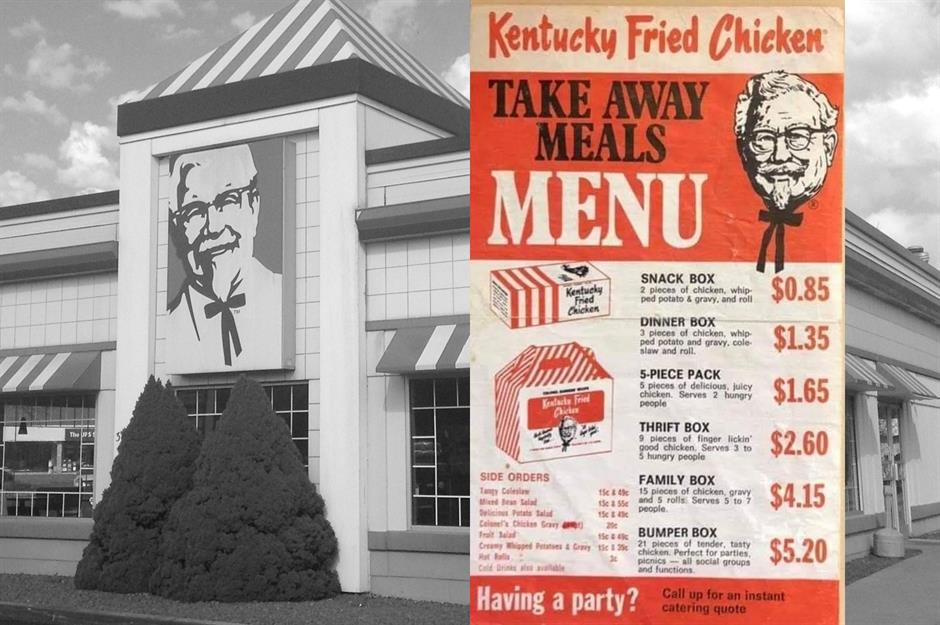
These days, our favorite fast food franchises have thousands of outlets all over the world, so it's fascinating to look back at their shockingly humble beginnings. Back in the day, the McDonald's, Burger Kings, and KFCs of the world had small menus – and even smaller prices for their burgers, fries, and shakes. These snapshots of the fast food menus of a bygone era will take you on a nostalgic journey through American life in the 20th century.
Click or scroll through our gallery to discover fast food menus through the decades, from the 1920s to the 1990s.
1920s: White Castle changes the game
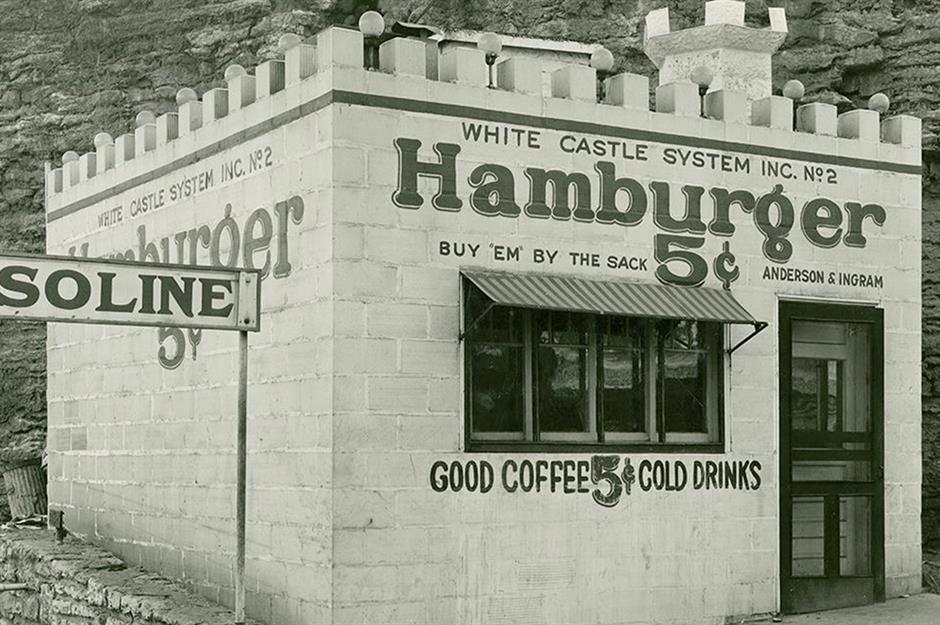
White Castle holds a special place in American history as the spark that lit the fast food flame, opening its first tiny outpost in 1921 in Wichita, Kansas. Back when this picture was taken in the 1920s, a hot cup of coffee and a hamburger would set you back just 5 cents – about 89 cents today. With its gleaming white exterior, spotless kitchens, and irresistible prices, White Castle captured the hearts of a generation. It’s no wonder the little burger stand grew into a beloved chain that, more than a century later, still serves up sliders at 345 locations across the country.
1930s: Nathan's gets famous

Nathan's opened its first hot dog stand in Coney Island, New York City, in 1916 – and, as you can see from this picture, it was doing a roaring trade by the 1930s. The menu, displayed prominently above the crowd of customers, screams that hot burgers with fried onions, hot barbecue sandwiches, potato chips, and hot frankfurters in rolls were all 5 cents apiece. That's the equivalent of around 96 cents in 2025.
1940s: Carl's Jr. makes a stand
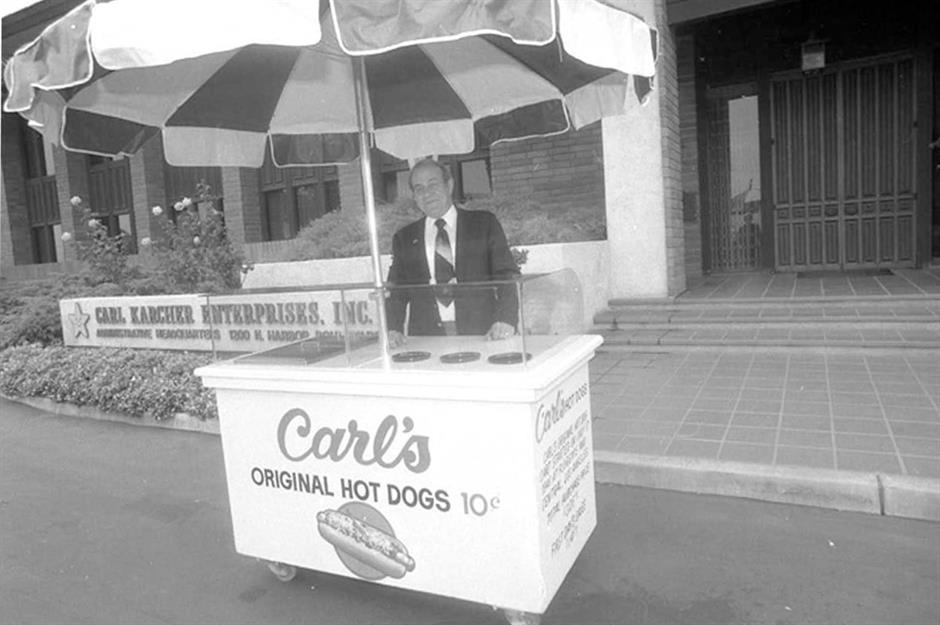
Legend has it that, in 1941, Carl Karcher sold his Plymouth Super Deluxe car for $311 and used an extra $15 from his savings account to buy a hot dog cart (pictured in the 1940s). Karcher charged 10 cents a dog (about $2.18 in 2025) in the early days, and the deal proved hard for customers to resist. Business was so good that Karcher opened Carl’s Drive-In Barbecue in 1945 – and the first Carl’s Jr. in 1956.
1950s: affordable treats at McDonald's
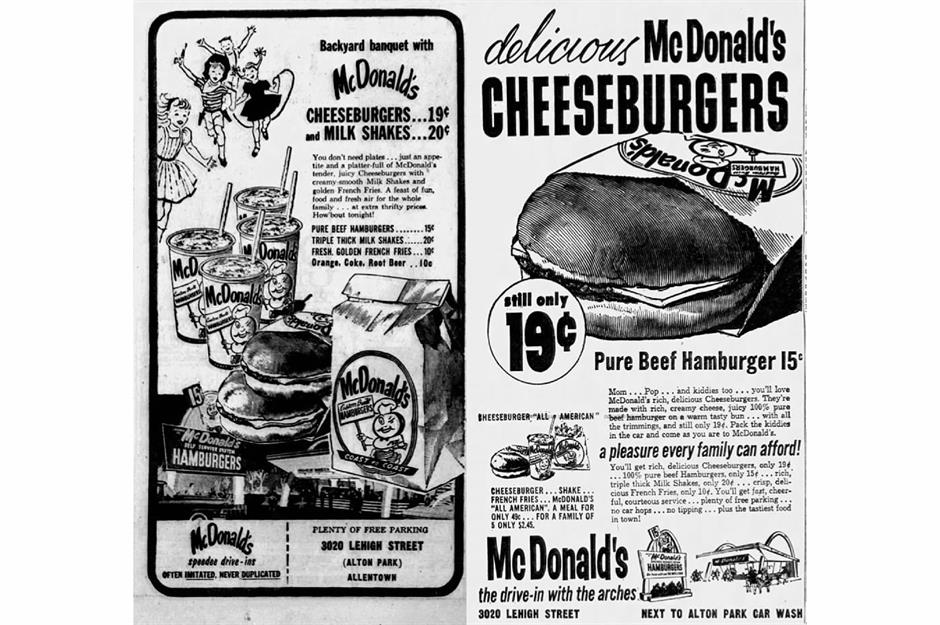
These rundowns of the McDonald's menu appeared in 1958, 18 years after the company was founded. The prominent selling point was clearly that a cheeseburger was 'still only 19 cents' (or $2.10 in today's money), but there are interesting details tucked away in the fine print, too. The Cheeseburger All American deal, for instance, included a cheeseburger, fries, and a shake for 49 cents ($5.42) – or $2.45 ($27.11) for a party of five.
1950s: Whataburger goes big
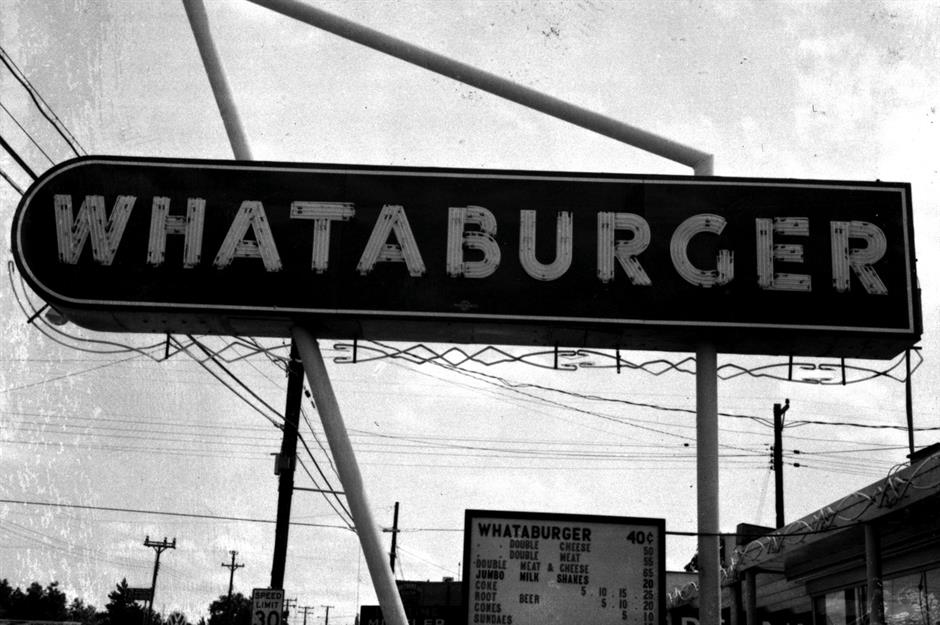
Ayers Street in Corpus Christi, Texas became the home of the first Whataburger on August 8, 1950. Founder Harmon Dobson apparently wanted his signature burger to be big enough to hold in two hands, prompting happy diners to proclaim, “What a burger!” This picture is dated 1953, so 40 cents ($4.79 in 2025) for a single Whataburger is surprisingly expensive – more than double the price of McDonald's offering in the same decade.
1950s: Burger King before the Whopper
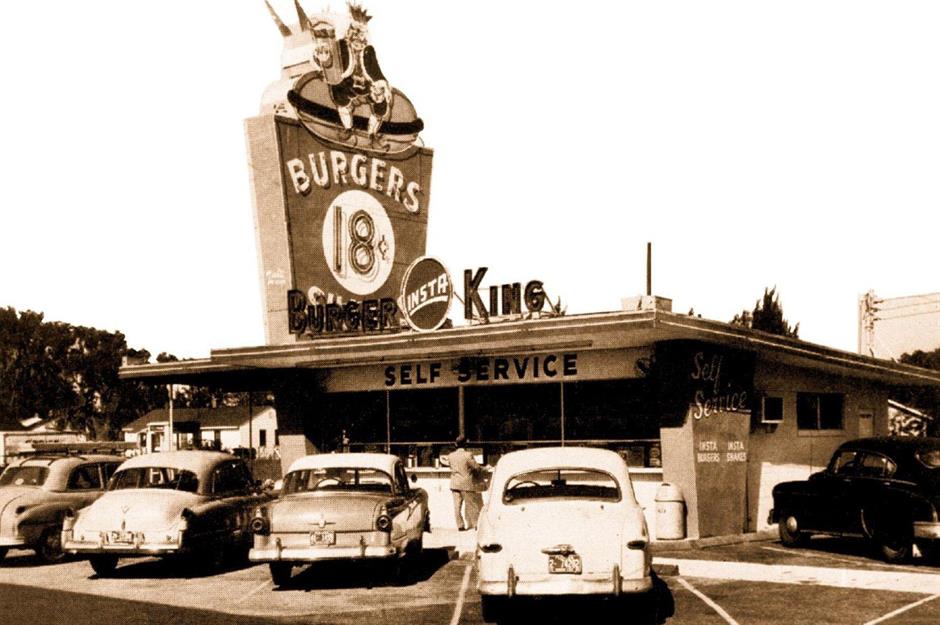
Burger King arrived on the fast food scene in 1954, and it made a big splash with its groundbreaking Whopper in 1957. There's no sign of a Whopper on the menu in this picture of an early Burger King restaurant – still called Insta-Burger King at this point – but when the hefty burger was introduced a few years later, the Whopper cost 37 cents (or $4.21 in 2025). The burgers here are still a relative bargain at just 18 cents (or $2.14 in today's money).
1950s: In-N-Out introduces Cali-style fast food
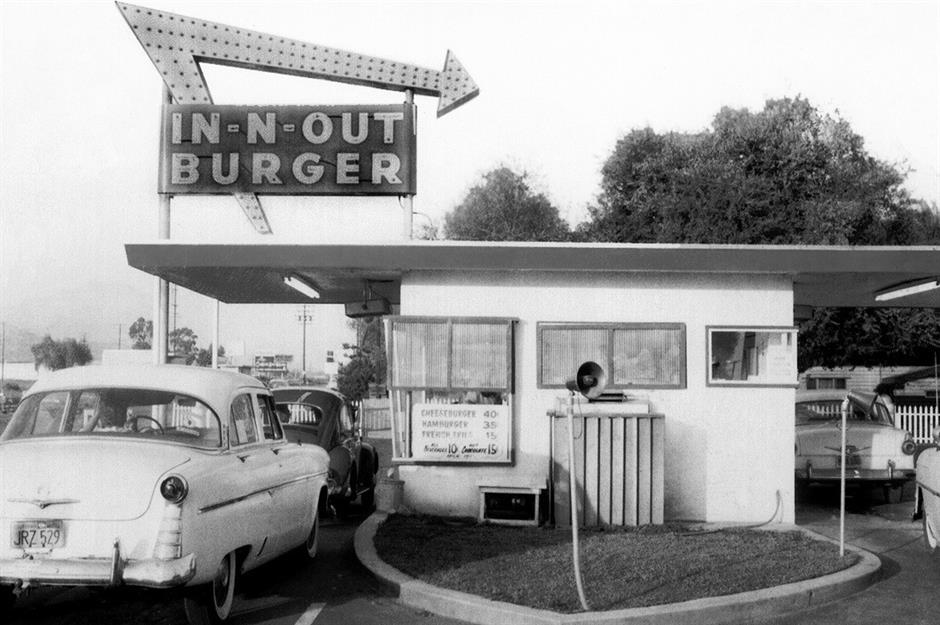
Harry Snyder opened In-N-Out in 1948, reportedly creating the first drive-thru hamburger stand in California. The iconic sign, as seen in this image, entered the scene in 1954, and In-N-Out remains one of the most respected fast food joints out there. The menu is still pretty stripped back today, but it was even more limited in the 1950s. Perhaps the most surprising old-school inclusion is hot chocolate, at 15 cents a cup ($1.78 in 2025) – not an item advertised on many other fast food menus at the time.
1960s: Jack in the Box revolutionizes the drive-thru

When Robert O. Peterson opened the first Jack in the Box in 1951, he revolutionized fast food by placing a then-groundbreaking intercom system inside a clown's head as part of the brand's signature drive-thru service. Today, Jack in the Box has grown to nearly 2,200 locations nationwide, though clown-themed speakers have mostly vanished. In this photo from the late 1960s, you can see the chain’s iconic tacos on sale for just 29 cents – that’s about $2.23 when adjusted for inflation.
1960s: McDonald's before the Big Mac
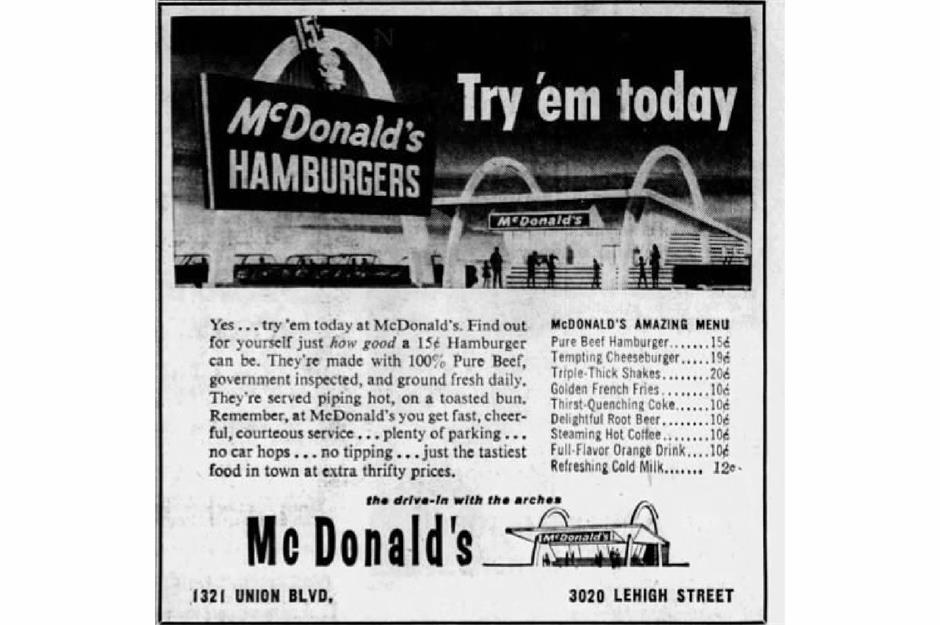
The exciting thing about this McDonald's menu description from 1961 is that it explains that the burgers are made from 100% pure beef that's 'ground fresh daily.' This makes it sound as if the beef was perhaps fresher than the burgers the fast food giant serves today. Right now, the burgers are ground, shaped, and frozen at the supplier stage before being shipped to stores. However, McDonald’s Quarter Pounder patties are a notable exception, as they’re made with fresh, never-frozen beef.
1960s: Sonic does things its own way
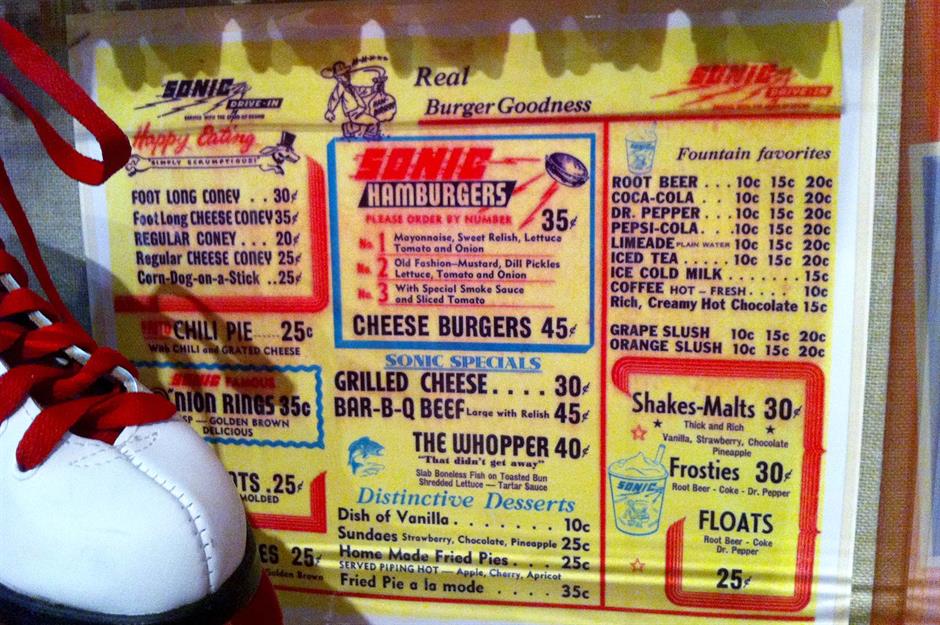
This Sonic Drive-In menu from 1961 is a fascinating glimpse into how much has changed – and how much has stayed the same. Many classics like burgers, cheeseburgers, grilled cheese sandwiches, and frozen drinks are still around today. But there are also some long-lost items, including homemade fried pies (filled with your choice of apple, apricot, or cherry) and Sonic’s The Whopper: a ‘slab’ of boneless fish served on a toasted bun with shredded lettuce and tartar sauce. Honestly, we wouldn’t mind seeing any of these items making a comeback.
1960s: Taco Bell offers something different
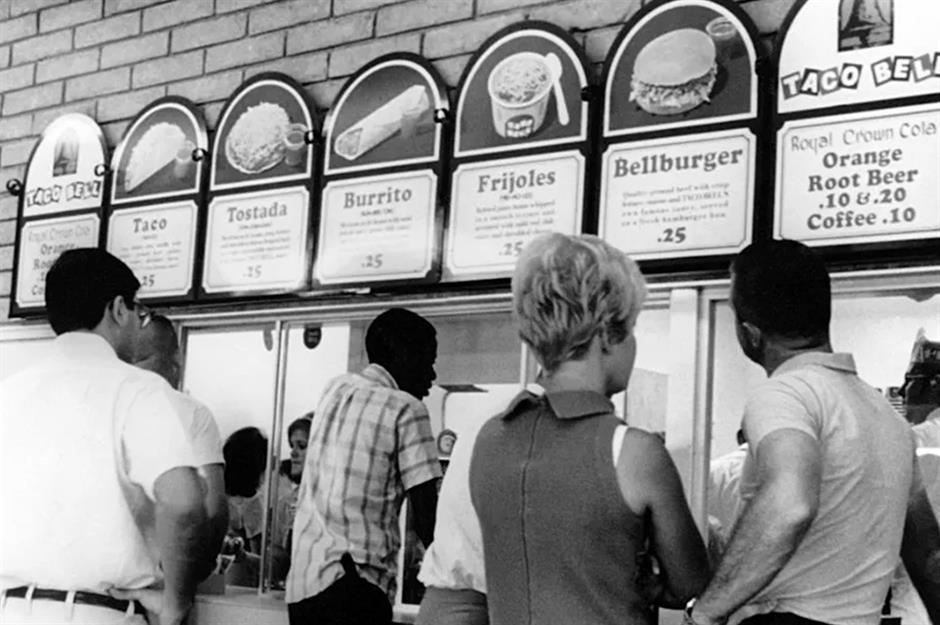
Before striking gold with Taco Bell in 1962, Glen Bell launched a series of food ventures – starting with Bell’s Hamburgers in 1948, then a taco stand called Taco Tia in 1954. At Taco Tia, tacos sold for just 19 cents (about $2.26 today). However, by the time Taco Bell arrived in the 1960s, the price had climbed to a quarter, or around $2.65 in today’s money. Clearly, customers didn’t mind the small bump in price. Today, Taco Bell has grown into a fast food giant with over 8,000 locations across the US.
1960s: Wendy's creates the modern drive-thru
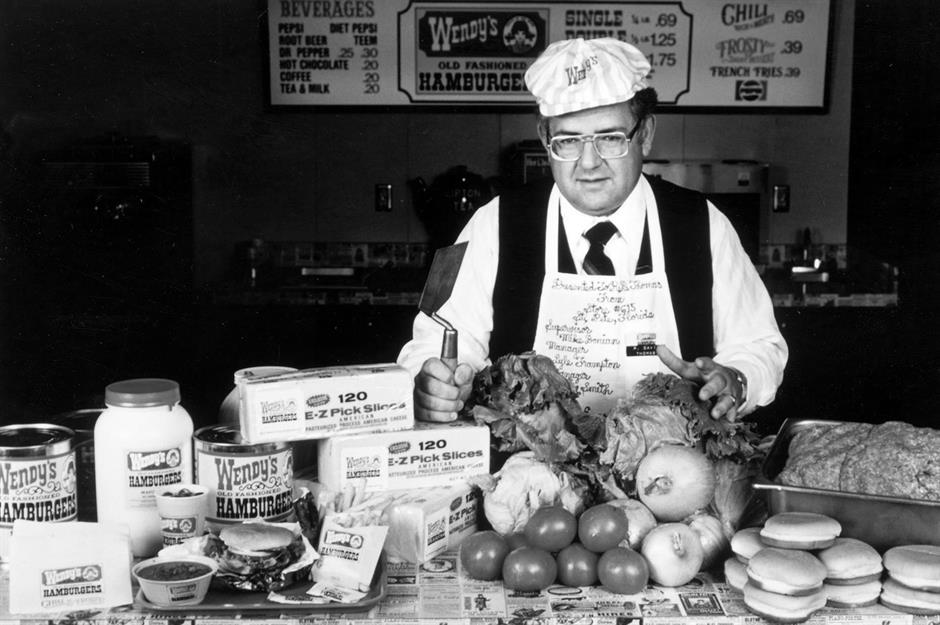
Wendy's is a relative newcomer in the fast food world, first setting up shop in 1969. However, the chain boasts of creating the modern drive-thru when it introduced the 'pick-up window' in November 1970. By then, the chain was already making a name for itself with its square burgers, which, as noted by the menu in this late 1960s picture, cost 69 cents – an impressive $6.01 in today's money.
1970s: McDonaldland is born

One standout item from this 1978 McDonald's menu board is the nostalgic McDonaldland Cookies. Priced at just 35 cents back then (about $1.72 in today’s money) these crunchy treats are sure to transport many people straight back to their childhoods. Introduced in 1974, they became a beloved staple for both kids and adults for at least two decades. While they’ve disappeared from US menus, McDonaldland Cookies are still available in Australia, keeping the sweet memory alive Down Under.
1970s: Kentucky Fried Chicken before it became KFC
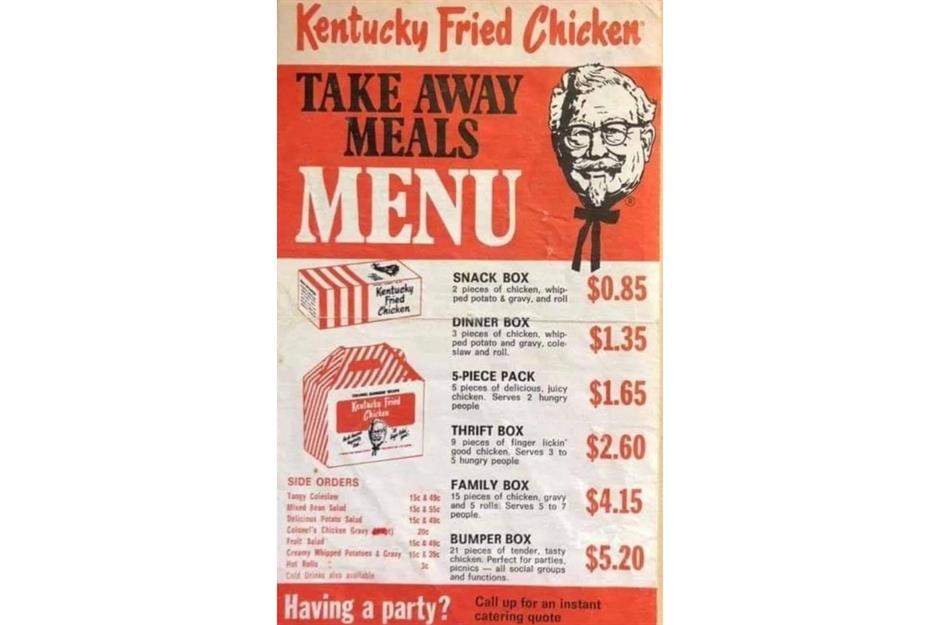
This takeaway menu appears to come from 1971, and you'll notice that the restaurant is still going by the name Kentucky Fried Chicken. It actually didn't change its moniker until 1991, when it officially became KFC. The reason? The Commonwealth of Kentucky trademarked the word 'Kentucky' so that any businesses using the state name would have to pay licensing fees. Kentucky Fried Chicken didn't like that much – so when it couldn't negotiate a deal, the company shortened its name to KFC.
1970s: White Castle keeps it simple

Considering White Castle was one of the first fast food joints on the scene, it doesn't have a very exciting history of innovation. Its most unusual process (making five holes in its patties) arrived in 1947, some 26 years after it opened. Amazingly, it took until 1962 – 41 years after opening – for it to introduce a simple cheeseburger. On this 1978 menu, the double cheeseburger sells for 54 cents, or $2.65 in 2025 money.
1980s: Dunkin' Donuts goes crazy for soup
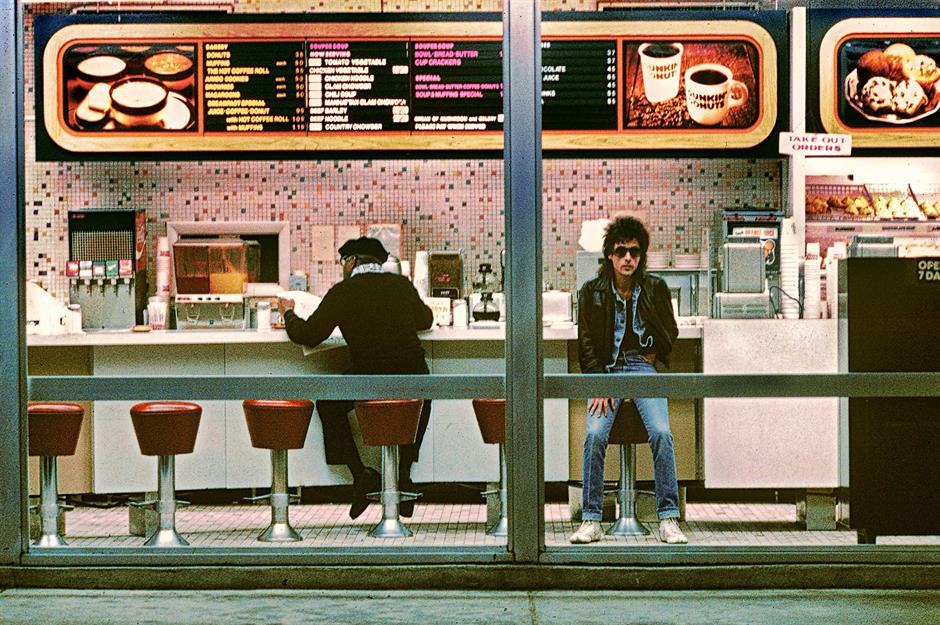
Did you know Dunkin' Donuts used to serve soup? Starting in 1974, the chain dished up bottomless 'Super Soup' in neat containers alongside bread and butter. In this image of a Washington DC outlet of the chain, taken in 1982, flavors included tomato vegetable, chicken noodle, Manhattan clam chowder, and country chowder. Dunkin' continued serving soup until around 1987. And yes, in case you were wondering, that is rock musician Earl Slick sitting at the counter.
1980s: McDonald's is lovin' it
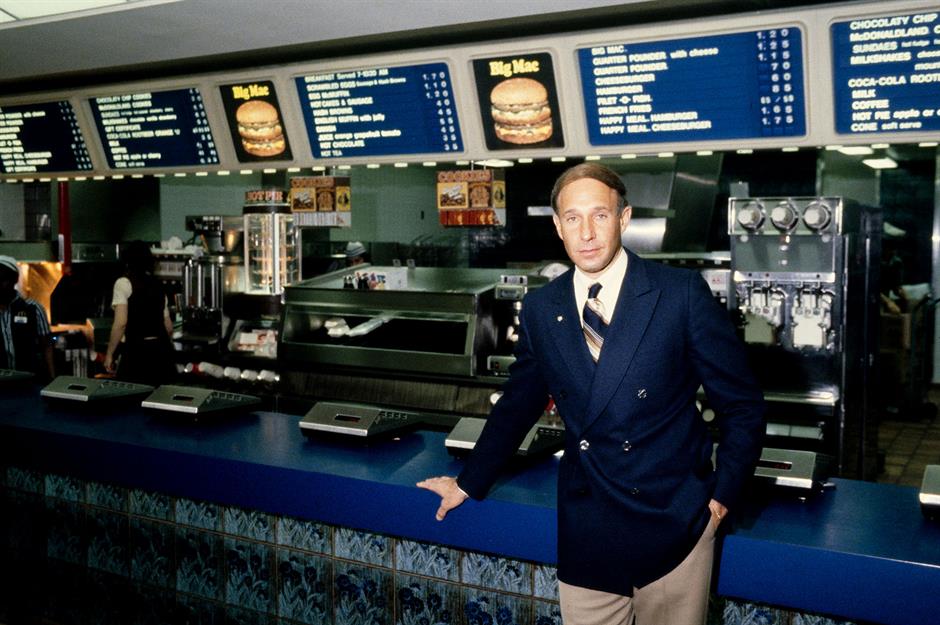
In this image of a McDonald's counter from 1981, you'll notice that all the staples of the McDonald's menu are present and correct. The Big Mac is front and center, of course, costing a reasonable $1.20. This is the equivalent of $4.22 in 2025, and that's not too far from the real price of a Big Mac in the United States today. According to a 2025 CashNetUSA report, Big Macs retail for as low as $4.36 in Austin, Texas, and as high as $7.06 in Seattle, Washington.
1980s: Arby's buys into the croissant boom
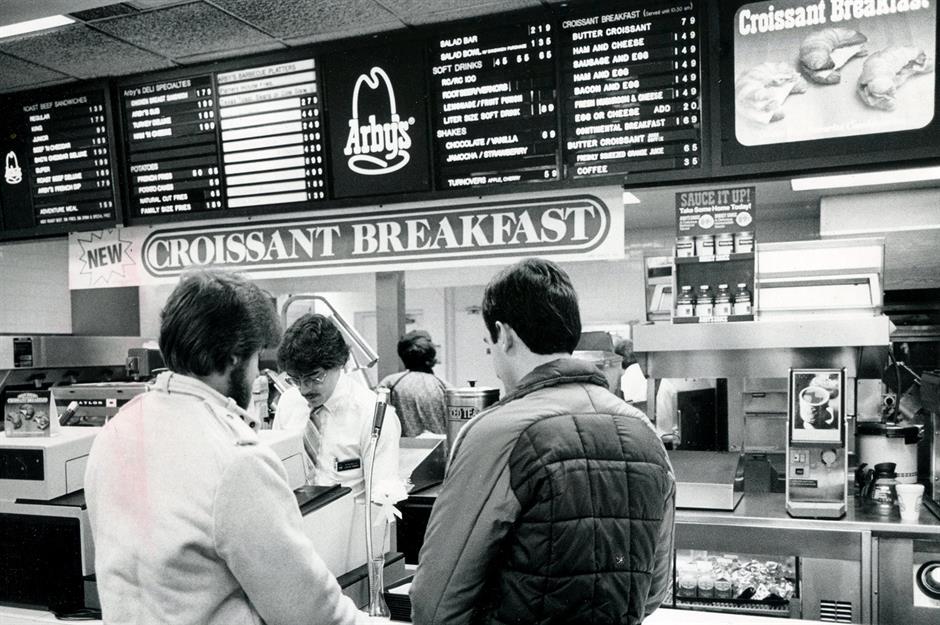
The croissant finally had its moment in American food culture in the 1980s. According to a 1984 report in The New York Times, Americans started succumbing to the charms of this French classic in 1981 – and three years later, there was a croissant boom throughout the US. As a case in point, Arby's introduced its Croissant Breakfast in 1984 (as pictured) to massive success. At the time, a spokesperson for the chain said it expected to gross as much as $100 million ($307 million in today's money) in its first year of sales.
1990s: Pink's enters the new century
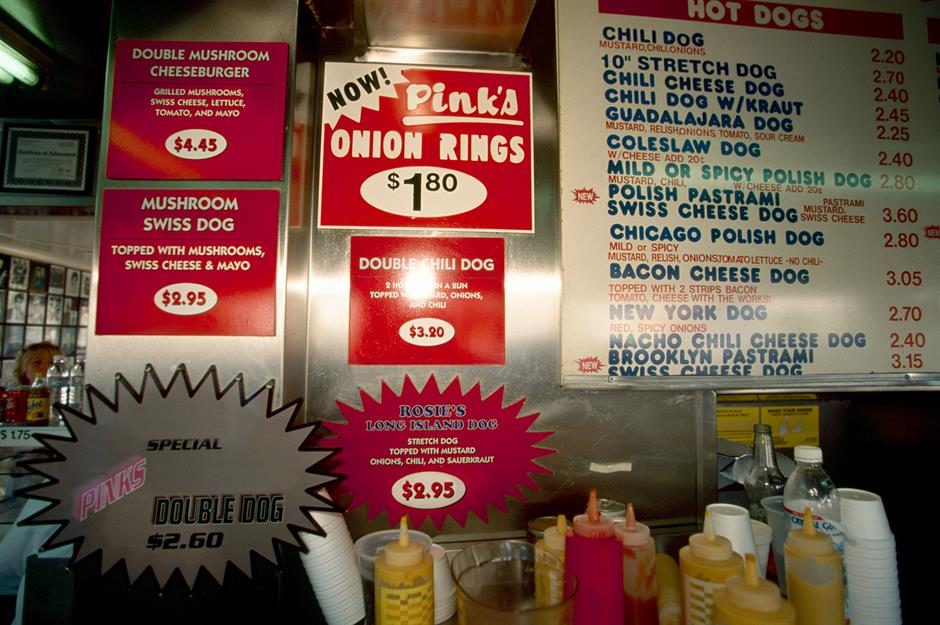
Pink's is a California icon; the classic hot dog stand has been holding its own in Hollywood since 1939. The most beloved item on its menu is the chili cheese dog (mustard, chili, onion, cheese) – which, at the end of the 20th century, was retailing for $2.40, or the equivalent of $4.61 in 2025. The same hot dog sells for $8.75 today.
1990s: Burger King embraces nostalgia

This photo of a Burger King outlet in San Francisco, California was taken in 1991, but the only thing telling you that is the price of the burgers. After all, the Burger King logo used back then is strikingly similar to the one used today. In 2021, the chain proved that nostalgia sells when it rebranded, putting a fresh take on its 1990s logo back into action.
Now discover the limited-edition fast food items we'd love to see made permanent
Comments
Be the first to comment
Do you want to comment on this article? You need to be signed in for this feature